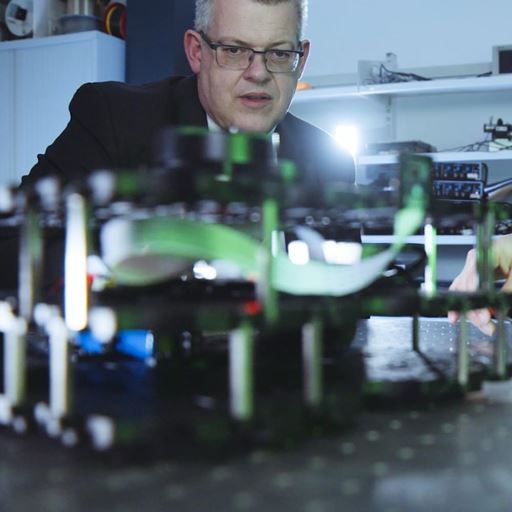Research could make robots more resilient than ever before
-
Date
Thu 11 Jun 20

Computer scientists at the University of Essex have uncovered a new perspective on artificial intelligence and machine learning which could make robots more resilient than ever before.
Using a methodology called SoCodeCNN, their research bridges the gap between two important fields of artificial intelligence (AI) and offers a new form of AI to robots that has not been explored before, and a further step towards improving machine intelligence.
The research is the latest to come out of Essex’s role in the £42m National Centre for Nuclear Robotics (NCNR) and has been highlighted as the most popular paper in top rapid publication journal IEEE Access.
Natural language processing (NLP) and computer vision using convolutional neural networks (CNN), or visual CNNs, are two very important, but disjointed, fields of AI which teach computers to find and recognise patterns in texts and images. By bridging the gap between these two areas of AI, the SoCodeCNN methodology means that even if a computer might not be able to read or write the program, it can analyse the program by looking at it using its visual features.
The NCNR is a consortium of eight universities developing state-of-the-art robotics, sensing and AI technologies to address the major challenges posed by extreme environments and hazardous materials.
Led by Professor Klaus McDonald-Maier, Essex’s role in the Centre is to develop new methods for increasing the resilience of the electronics systems hardware and software against radiation damage. Other ongoing research by the Essex NCNR team, from the School of Computer Science and Electronic Engineering, involves working on new robot vision algorithms for localisation, mapping and perception capabilities in nuclear environments. Working with Professor McDonald-Maier at Essex are Somdip Dey, Amit Kumar Singh and Dilip Kumar Prasad.
Cleaning up the UK’s 4.9 million tonnes of nuclear waste is the largest and most complex environmental remediation task in the whole of Europe. Robots must do much of this work because the materials are too hazardous for humans. However, many of the necessary robotic solutions for this task are yet to be developed.
Robots involved in nuclear decommissioning must be much more sophisticated, resilient and energy-efficient than other conventional industrial robots.
This latest research methodology has shown that a robot is now capable of analysing the code it is programmed to deliver and use this to improve and adapt its functionality.
This means it can for example make better energy-saving decisions, so it can last longer on its operating battery. Therefore, when the robot is sent into a radioactive environment, it can last longer in such an extreme environment.
Professor McDonald-Maier said: “We are extremely pleased to see that this cutting-edge work that has pioneered computer vison approaches to analyse software code has become the most popular paper in IEEE Access in recent months. This technique offers both a totally new perspective and at the same time allows a step change in improving the resilience of mobile robots deployed to hazardous environments.”
NCNR has established the UK as an international leader in translating cutting-edge robotics and AI research advances into practical solutions for a safety-critical and high-consequence industry. It is envisaged that the UK nuclear decommissioning task will take more than 100 years, with current annual costs exceeding £3 billion. Therefore, speeding up decommissioning, by introducing advanced robotics and AI methods, will potentially result in enormous national expenditure savings.
NCNR, led by the University of Birmingham, is co-funded by the Engineering and Physical Sciences Research Council research institutions, industrial collaborators and investment partners.
.jpg?mh=500&mw=500&hash=6568B6C9CCF5290A596BEF6678B6AD0E)



